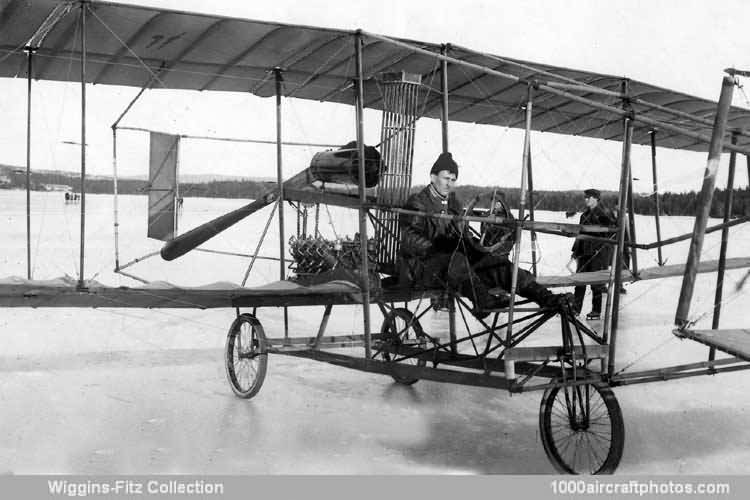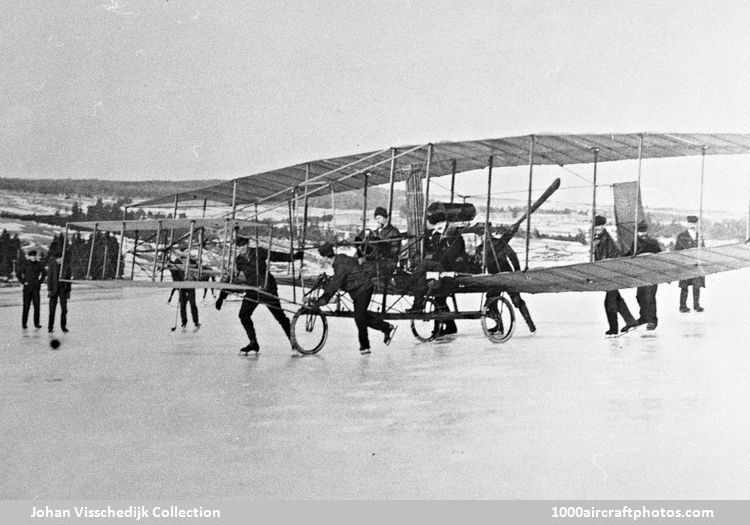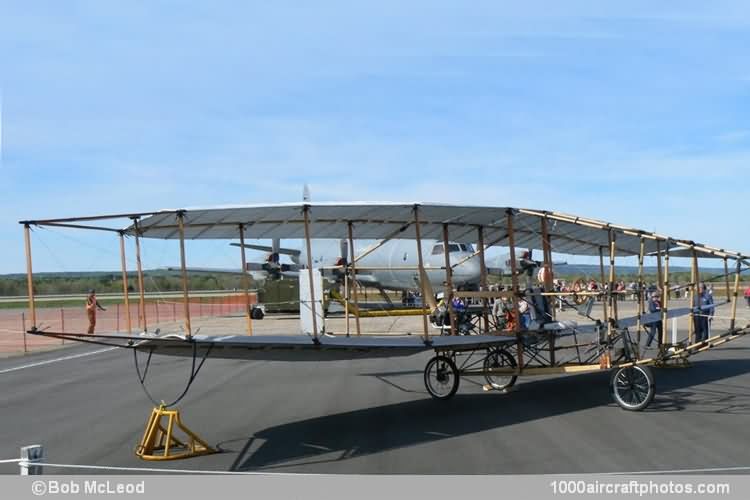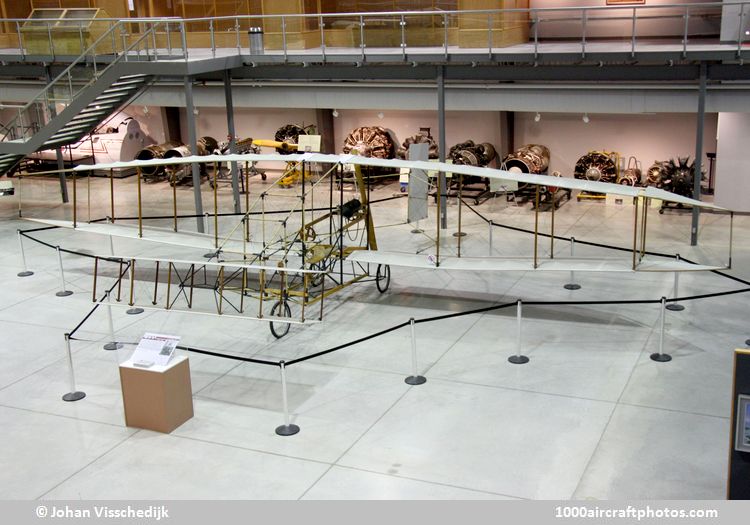Photographed at Baddeck Bay, Nova Scotia, Canada, February 23, 1909, source unknown
11/15/2022. Remarks by
Johan Visschedijk: "The Aerial Experimental Association (AEA) was formed by Alexander Graham Bell at his Canadian home in 1907. The AEA comprised of Frederick Walker "Casey" Baldwin, Glenn Hammond Curtiss, John Alexander Douglas McCurdy, and Lieutenant Thomas Etholen Selfridge. Financed by Bell's wife, Mabel Gardiner Hubbard Bell, the AEA aircraft were built at Hammondsport, New York.
AEA's fourth and last to fly aircraft, the Silver Dart single-seat open biplane, was designed by McCurdy. Of mixed steel tube, bamboo and wood construction, covered with silvery rubberized silk balloon-cloth, it was powered by a 50 hp Curtiss eight-cylinder liquid-cooled pusher V-engine driving a wooden propeller. The Silver Dart was first flown on June 21, 1908, by McCurdy.
The last of AEA's team efforts, the Silver Dart became the first airplane to fly in Canada on February 23, 1909, as pictured here with McCurdy at the controls. (This flight is often claimed as the first powered flight in the British Commonwealth, however, that was performed by Samuel Franklin Cody in the British Army Aeroplane No. 1 at Farnborough, England, on 16 October 1908).
Mid-1909 it was shown to Canadian Army officials at Petawawa, Ontario were on August 2, the aircraft was wrecked upon landing after its fifth flight of that day, McCurdy escaped injuries. The Silver Dart had flown an estimated 3,000 mls (4,828 km) in just over a year, an impressive achievement in those days.
(
Johan Visschedijk Collection)
To commemorate the first powered flight in Canada, two flying replicas were built in 2009.
Aerial Experiment Association 2005 Silver Dart (C-IIGY) (
Bob McLeod Collection)
Built by Aerial Experiment Association 2005, C-IIGY first flew on February 6, 2009. Since April 2013 it is preserved at the Alexander Graham Bell Museum at Baddeck, Nova Scotia.
Lubitz Silver Dart 5 (C-IIIB c/n Mach 0.046) (
Johan Visschedijk Collection)
This replica was built by Ed Lubitz and Mark Taylor and completed in March 2009. The construction number Mach 0.046 refers to the 34 mph (55 kmh) cruise speed of the original aircraft. The C-IIIB is preserved at the National Air Force Museum of Canada since November 2010."



